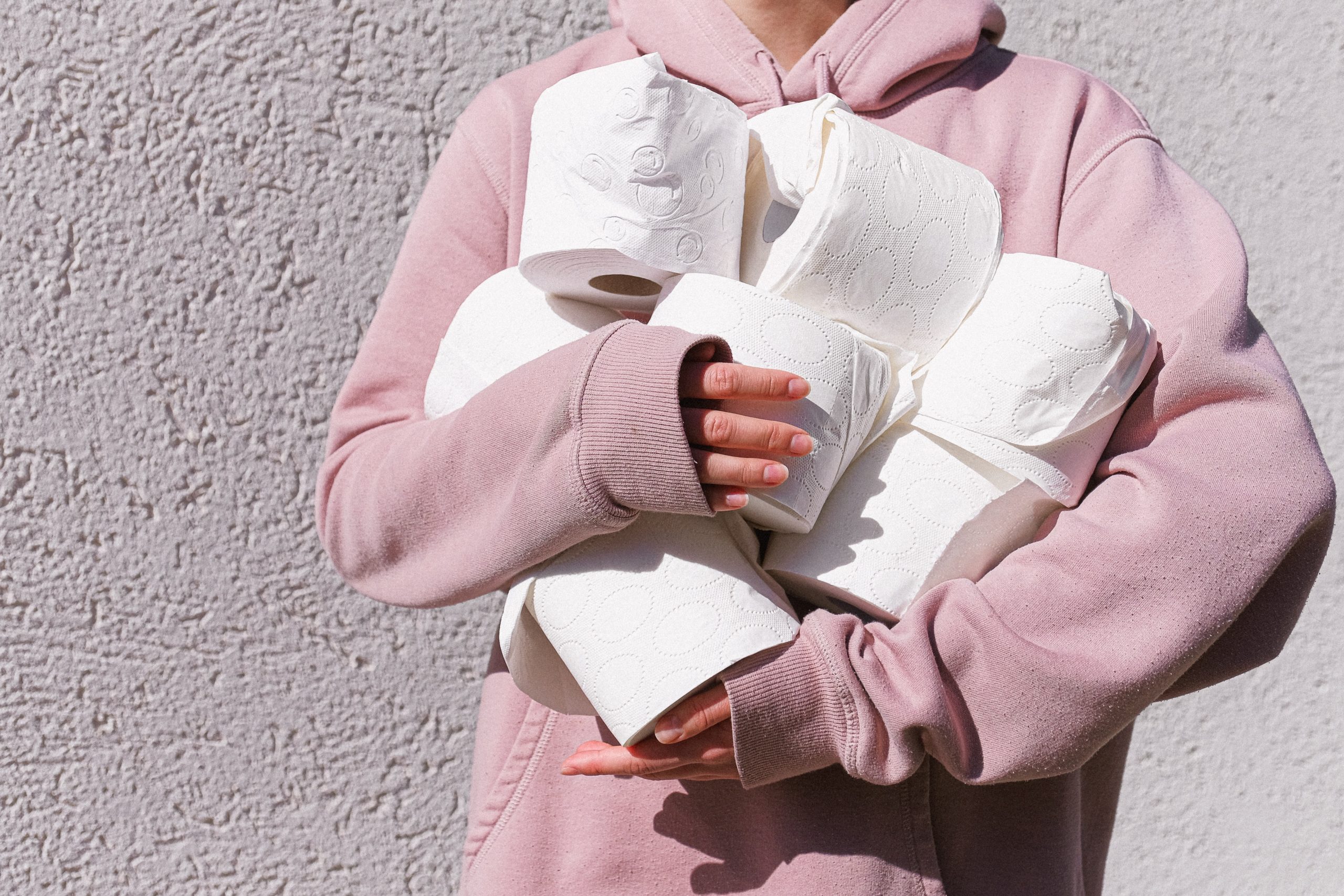Why is toilet paper one of the first supplies to disappear when people start stampede or panic buying? One might assume it is because toilet paper is what people think they will need most or fear running out of most during a pandemic, but is this really the case?
The scarcity of toilet paper during this pandemic is actually due to certain key attributes of this product that when combined with changes in behaviour and population psychology led to stampede or panic buying.
product attributes + behaviour change + population psychology = stampede
Product attributes
Size
Toilet paper is generally sold in large volumes of 6-24 in a pack. This packaging leads to a low unit / shelf space ratio, probably the lowest in most stores where toilet paper is sold. The other items in the store are smaller and typically sold individually (e.g., cans of soup) so the same amount of shelving space holds many more units than is the case with toilet paper.
Weight
Although it is a large item, toilet paper weighs very little which enables shoppers to easily carry as many packages as their cart(s) will accommodate.
Behavior Change
Location of activity.
People who usually spend their day outside the home at work or school are now staying home which has shifted where the use of this product occurs. This impacts distribution as the paper supply chain moves from a mix of industrial (low quality limited types) and home (high quality and many products) demand to more predominately residential demand. This does not change overall demand but dramatically shifts the nature of the demand within a product category.
Psychology
Scarcity
Removing one toilet paper unit (such as a 6, 12 or 24 pack)
(1) creates a larger void than removing an item such as canned goods or toothpaste and
(2) significantly reduces the proportion of empty/full shelf space compared to smaller items.
With just a few items gone, it quickly looks like the shelves are emptying of toilet paper, and this is in fact the case. However, people can’t see how much toilet paper is in the warehouse and the supply chain.
Missing out
When someone sees a shelf that has large empty space, compared to other shelves, even if only half empty, they will immediately take the product because everyone else is and they think that if they hesitate the item may run out even as they walk around the store.
Future fear
People can and will take more than what is required because the units are light, and they fear that supply will be scarce in the future.
Parting thoughts
When people are asked to stay put and stock up, the convergence of many factors leads to the real phenomena of the scarcity of toilet paper even when it is quickly resupplied. It has become the zeitgeist of the moment and that becomes a self-reinforcing behaviour of empty shelves causing people to buy more or make more of an effort to find products.
In a crisis, rapid management of the supply chain and store limits may help reduce the likelihood of panic buying as it will be hard to explain to consumers the psychology behind this behaviour.



